Varanasi : What to expect


Banarasi silk sarees are Indian sarees made in Varanasi, a city which is also called Benares or Banaras. The sarees are among the finest sarees in India and are known. And you'll find very few people who don't like them! There's something about a rich Banarasi saree which is classic- something you just cannot go wrong with, whether you're including them in your bridal trousseau or choosing to wear it on your big day, and trust us, while Banarasi lehengas might be a recent trend on the wedding day, Benarasi sarees have been worn for ages and ages by brides, and even when they do today, do really stand out in the crowd! The peculiarity hidden in the prints of a Banarasi Saree is one of a kind. Yes, there is a reason why some of the biggest designers in the countries still include Banarasi in their creations, and we have all the info and inspiration you'd need all in one post! One ought to have a Banarasi Silk Saree for a wedding or else they’ll be missing something which carries a lot of grace.
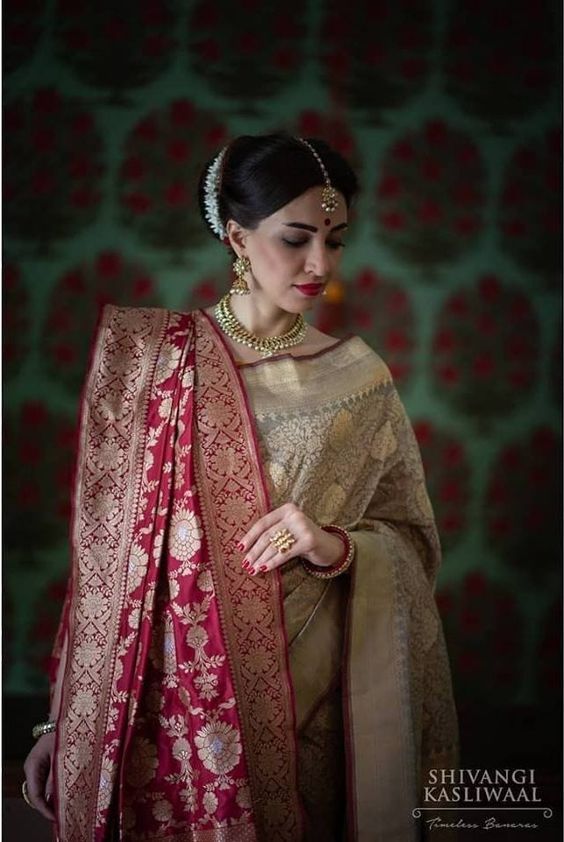
Banarasi sarees came into existence during the Mughal era when Muslim artisans and craftsman chose Banaras as the place that blended well with their culture and started weaving silk Banarasi sarees there. Their special characteristics are Mughal-inspired designs such as intricate intertwining floral and foliate motifs, kalga and bel, a string of upright leaves called jhallar at the outer, edge of border is a characteristic of these sarees. Depending on the intricacy of its designs and patterns, a saree can take from 15 days to a month and sometimes up to six months to complete.
There are various types of Banarasi Sarees that a bride can look upto and not just one. Silk is not the only form of Banarasi saree you get. There are four fabric varieties of Banarasi sarees, namely:
Katan is a plain silk fabric. This has woven pure silk threads which are twisted and then woven into pure silk sarees. While today these sarees are produced using looms, during ancient times Katan sarees were handwoven using handlooms. The fabric is extremely soft and fine that has made Benarasi capture love all over again.
As we all know that brides require a tinch of modernity in their outfits which makes Shattir, a perfect fabric to go to. Shattir is the sole fabric used to create contemporary and exclusive designs under the name Banarasi.
Brocades are the most beautiful and richly woven fabric where the patterns are patterned with different designs made by warp and weft. Silver threads are coated with gold and are then woven closely around a silk yarn to create zari brocade. This cloth is suitable for a Banarasi Saree for a wedding bride to make her look ravishing.
As you might know already, Georgette is a finely woven light fabric with a simple and plain weave. This is more popular for contemporary sarees.
Banarasi sarees are also segregated according to the design process, and the different categories are:
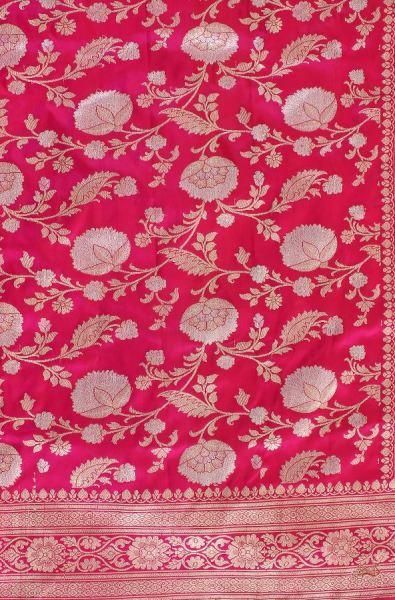
The word Jangla has been an adaptation from the word Jungle which can be explained in this particular print which spreads a vegetation motif across the saree. It is a type of brocade characterized by intricate weaving.
This is the beautiful ‘Jamawar’ style paisleys or Labyrinth woven by zari. This is another kind of Benarasi saree which is very popular for weddings, and artisans from Banaras weave patterns on these sarees with colorful weft silk yarns. The pallu of this sari is often decorated with large motifs of paisleys while the border might have criss-cross patterns.

These are the sarees which are not as expensive as the ones mentioned above, basically the less expensive version of Jamdani sarees. This one is made using cut work technique on plain texture using some cotton mixed with the silk. Most popular motifs which are featured in cut work sarees are jasmine, marigold flowers, creepers and leaves.
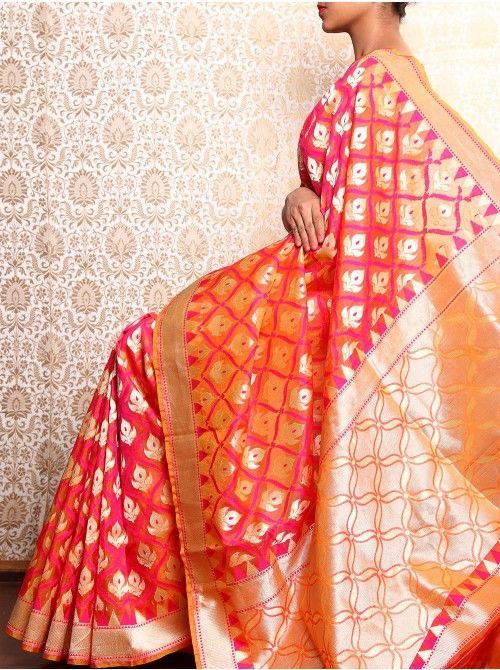
These have the most delicate look and work of them all. These are delicately woven sarees with golden zari weft which adds sheen to these tissue sarees. The popular designs used in tissue sarees are golden zari woven lotus floating in a radiant pond, where the water drops are designed with cut-work technique. The border and pallu of the sari are patterned with self woven paisleys.
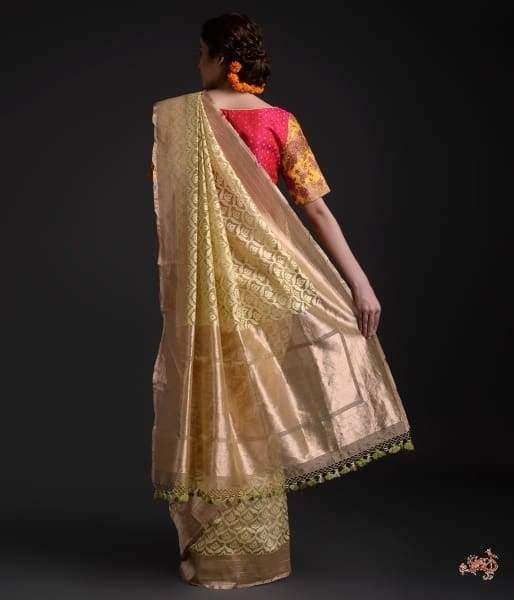
Probably the most popular and distinctive, Butidar sarees are richly woven, brocaded with threads of gold, silver and silk. Gold is darker in shade as compared to silver threads. Therefore the weavers of Banaras refer to this variety of brocade patterning as Ganga-Jamuna. Motifs are locally popularized as Angoor Bail, Ashraffi Butti, Latiffa Butti, Reshem Butti Jhummar Butti, Jhari Butta, Patti Butti, Baluchar Butta and many more.
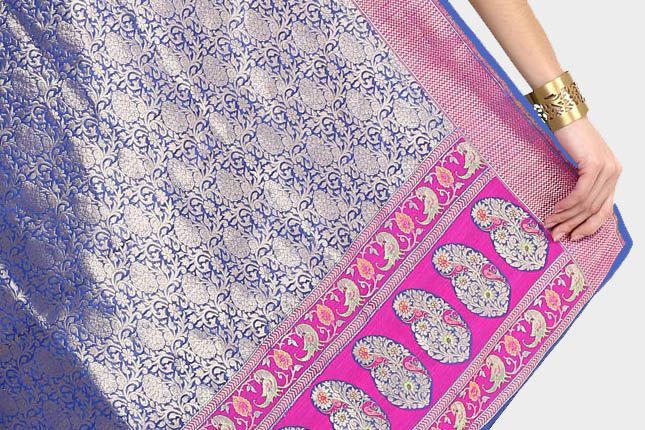
Comments
Post a Comment